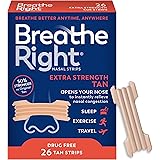Estimates suggest that over 100 million individuals globally actively engage with Autonomous Sensory Meridian Response (ASMR) content, often seeking unique sensory experiences to foster relaxation and improve sleep. A particularly engaging variant within this expansive digital landscape is the ASMR Color Challenge, as dynamically showcased in the accompanying video. This immersive approach leverages both visual stimuli and familiar ASMR triggers to guide viewers into a state of heightened tranquility. This article delves into the synergistic relationship between color psychology and ASMR, exploring how visual cues can significantly amplify the desired sensory responses.
Understanding the ASMR Color Challenge Phenomenon
The ASMR Color Challenge represents a creative fusion of visual engagement and sensory relaxation. In essence, participants are presented with a series of colors, often dictated by a digital filter or a physical “cheat book,” and subsequently tasked with identifying or matching objects that correspond to those specific hues. This process is not merely an ocular exercise; rather, it is meticulously designed to activate key ASMR triggers. The deliberate act of searching for and matching colors, coupled with the soft verbalizations and gentle movements typically associated with ASMR videos, contributes to a deeply absorbing experience.
Such challenges are widely embraced due to their capacity to divert attention from daily stressors, thereby facilitating a meditative focus. The visual clarity and structured nature of a color identification task can be profoundly grounding, allowing the mind to settle and become receptive to the subtler, yet powerful, tingles and sensations that characterize ASMR. The anticipation of identifying the correct color, followed by its confirmation, often serves as a mild cognitive reward, further enhancing the overall soothing effect.
The Science of Visual ASMR Triggers
ASMR, often described as a static-like or tingling sensation on the skin that typically begins on the scalp or neck and moves down the back of the spine or limbs, is a complex neurosensory phenomenon. While auditory triggers (e.g., whispers, tapping, crinkling) are frequently highlighted, visual stimuli play an equally pivotal role for many enthusiasts. The precise, often repetitive, and intentional movements inherent in an ASMR Color Challenge are powerful visual triggers.
For instance, the careful selection of an object, its gentle placement, or even the subtle shifts in focus as an item is brought into view, can all contribute to the onset of ASMR. These visual cues are thought to engage specific neural pathways, leading to the characteristic paresthesia and feelings of profound calm. When combined with hushed narration or soft ambient sounds, the visual component forms a comprehensive sensory tapestry, designed to meticulously guide the viewer toward a state of deep relaxation.
A Deep Dive into Color Psychology and Relaxation
The psychological impact of color is a well-documented field, revealing that various hues can elicit distinct emotional and physiological responses. Within the realm of ASMR and relaxation techniques, the strategic deployment of color is not accidental; it is an intentional choice aimed at augmenting the viewer’s journey toward tranquility. The colors presented in challenges, such as those seen in the video, are often chosen for their inherent calming or mood-enhancing properties.
Each color possesses a unique vibrational frequency and is associated with different psychological states. Understanding these associations allows ASMR creators to curate experiences that are not only visually pleasing but also emotionally resonant, reinforcing the overarching goal of stress reduction and mental peace.
The Allure of Purple-ish Hues
As observed in the video, purple-ish tones frequently feature in relaxation content. Purple, a color historically linked to royalty, luxury, and spirituality, is also profoundly associated with creativity, imagination, and introspection. Lighter shades of purple, such as lavender or lilac, are particularly renowned for their calming effects. These hues can help to quiet the mind, reduce feelings of anxiety, and prepare the body for rest, making them excellent choices for evening ASMR sessions or meditations. The gentle visual presence of purple objects often conveys a sense of serene mystery, inviting a viewer to relax into a contemplative state.
Earthy Browns: Grounding and Comfort
The deep, grounding presence of brown, as exemplified by the “dark brown” mentioned in the challenge, evokes a strong connection to nature and stability. Brown hues are often associated with feelings of warmth, security, and reliability. In an ASMR context, the sight of brown objects can provide a sense of rootedness, helping to alleviate feelings of unease or restlessness. This color psychologically anchors the viewer, offering a visual representation of comfort and dependability, thereby enhancing the overall sense of safety and relaxation within the ASMR experience.
Illuminating Yellow: Optimism and Gentle Focus
Yellow, particularly softer variations like “citrus or sunflower” yellow, as identified in the video’s “cheat book,” holds a distinct place in color psychology for relaxation. While vibrant yellows can sometimes be stimulating, muted or pastel yellows are often linked to optimism, cheerfulness, and gentle clarity. These softer shades have the capacity to uplift the mood without overstimulating the senses, making them suitable for ASMR content aimed at dispelling mental fog or encouraging a mild, pleasant focus. The presence of such yellows can subtly brighten the visual field, fostering a sense of peaceful alertness that is conducive to relaxation rather than sleep, helping to maintain a light, positive atmosphere.
Enhancing Your ASMR Experience with Color
For content creators, the intentional use of color in an ASMR Color Challenge is a potent tool. Considerations such as lighting, background palettes, and the specific shades of props can all be manipulated to achieve desired emotional and physiological responses. Utilizing a balanced spectrum of colors that align with relaxation principles ensures a more impactful and immersive experience. Furthermore, the deliberate pacing of visual reveals and the contrasting textures of colored objects can further enhance the sensory engagement.
For viewers, actively engaging with the visual elements, such as focusing on the distinct shades and the gentle movements involved, can deepen the ASMR experience. Creating an environment with ambient lighting that complements the video’s color scheme can further synchronize your surroundings with the onscreen content, thereby maximizing the potential for tingles and profound relaxation. The synergy between intentional color choices and the inherent triggers of ASMR significantly amplifies the therapeutic benefits, transforming a simple challenge into a potent tool for well-being. Ultimately, the careful orchestration of an ASMR Color Challenge serves as a testament to the intricate and powerful connections between visual stimuli, sensory perception, and human psychological comfort.








